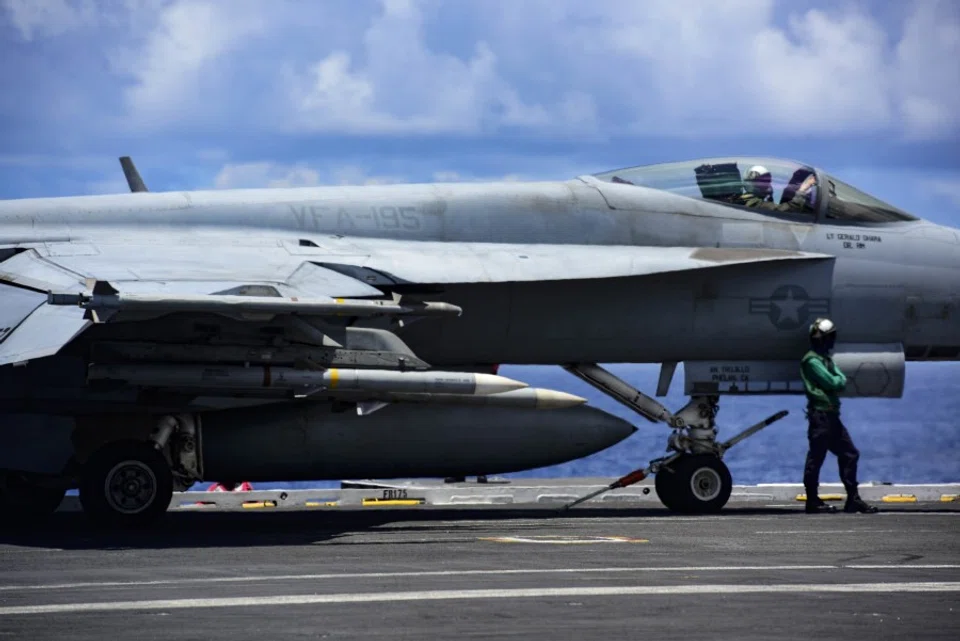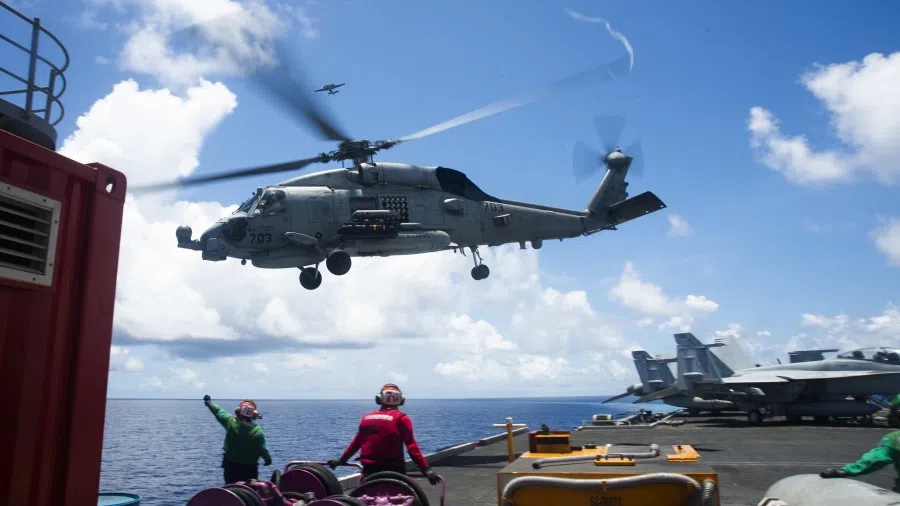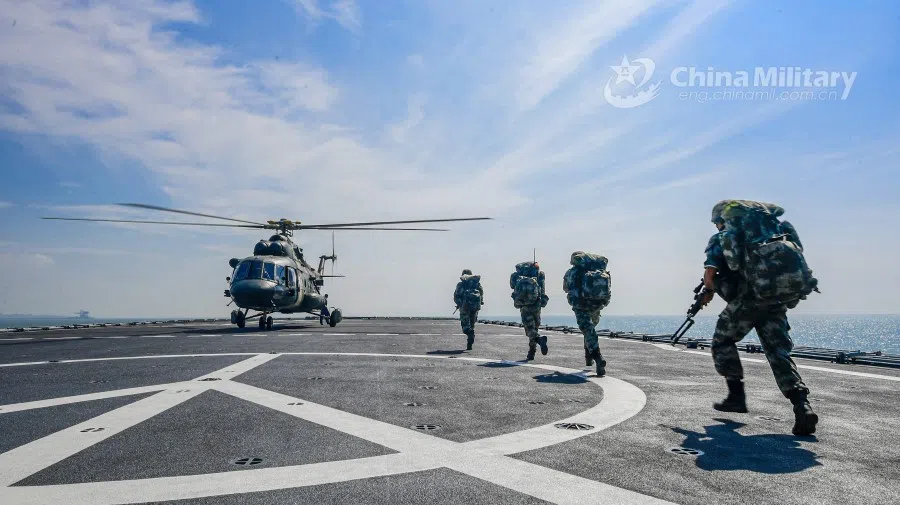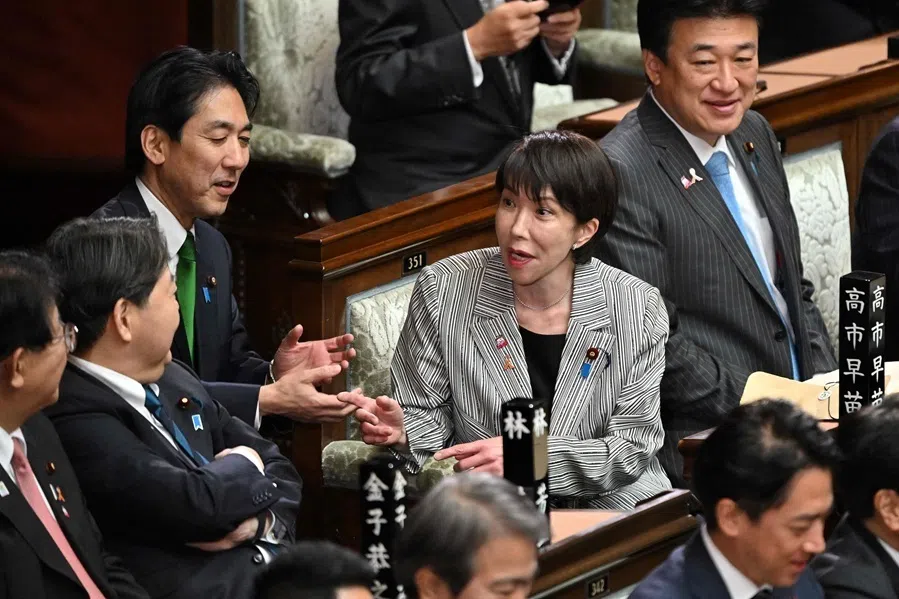Mutually assured disruption: US-China brinkmanship in the Taiwan Strait
Even as the US and China are ramping up their military presence in the Taiwan Strait, academics say that this is to prevent military conflict and ease tensions in the area. Nonetheless, attempts at inducing the opponent to beat a retreat will still ratchet up tensions in the region. Yang Danxu analyses this case of creeping escalation.

While China's People's LIberation Army (PLA) was carrying out live combat exercises in the Taiwan Strait, the US deployed military aircraft for three consecutive days to carry out close-range surveillance on mainland China, and sent the Ronald Reagan Carrier Strike Group to the South China Sea. Academics interviewed said the intention of the US in stepping up military presence in the Taiwan Strait during these sensitive times is to prevent China from using combat exercises as a pretext to launch a sudden attack on Taiwan. At the same time, the situation is becoming more complicated as both China and the US are taking steps to prevent each other from causing trouble.
According to Beijing think tank the South China Sea Strategic Situation Probing Initiative (SCSPI), from 13 to 15 August, the US sent at least seven surveillance aircraft to carry out operations near Taiwan airspace, including P-8A anti-submarine patrol aircraft, P-3C patrol aircraft, RC-135 strategic surveillance aircraft, and EP-3E electronic surveillance aircraft.
On 15 August, a US Navy EP-3E aircraft circled the skies southwest of Taiwan, carrying out a surveillance mission on mainland China's military movements, getting as close as about 50 nautical miles from Guangdong's coastline.
And on 14 August, the US Pacific fleet made a high-profile announcement of the return of the Ronald Reagan Carrier Strike Group to the South China Sea. Latest satellite images show the carrier also in the waters southwest of Taiwan.

The US's move to ramp up a deterrent military presence in the Taiwan Strait is seen as a response to the PLA's live combat exercises in that area.
Senior Colonel Zhang Chunhui, a spokesperson for the PLA Eastern Theater Command, announced on 13 August that the PLA Eastern Theater Command systematically deployed troops from multiple military branches and conducted live combat exercises in the northern and southern ends of the Taiwan Strait. Without naming any country, Zhang said "certain big countries" have taken negative actions on the Taiwan issue and sent the wrong signals to pro-independence forces in Taiwan, which has seriously threatened peace and stability in the Taiwan Strait.
"...but even if both sides are not intending to attack, there is still a risk that something might be sparked off, so the situation now is complicated." - Shen Dingli, Fudan University
Aim is to avoid incidents and ease regional tensions
Professor Shen Dingli of the Institute of International Studies at Fudan University told Zaobao that these exercises by China are meant as a deterrent to discourage opponents, prevent war and lower tensions, while the US sending its carrier is to keep an eye on China's exercises, and to prevent the PLA from using the exercises as a pretext and turning them into offensive capabilities and launching a military hit on Taiwan.
"Everyone is taking a defensive stance of 'preventing trouble', to stop anything from happening and lower regional tensions... but even if both sides are not intending to attack, there is still a risk that something might be sparked off, so the situation now is complicated," he said.
Professor Liu Guoshen of the Taiwan Research Institute at Xiamen University also said mainland China has always stressed maximum effort in peaceful resolution of cross-strait issues, but the Democratic Progressive Party (DPP) government keeps taking actions that damage peace, and the buffer zone for military action between both sides is shrinking.
He said, "Whether China-US or cross-strait troops, there are more opportunities for direct contact. Given the circumstances, no one can rule out the chances of a mishap."
The US and Taiwan have been working closely in diplomatic and military matters, which has posed a challenge to Beijing. The US has recently confirmed a sale of 66 new F-16 fighter aircraft to Taiwan, worth US$62 billion (S$71.2 billion), while US Secretary of Health and Human Services Alex Azar was on a four-day visit to Taiwan last week, the highest-ranking official to do so since 1979.

Observers feel that unless the US and Taiwan breach China's Anti-Secession Law, resolving the Taiwan issue is not a priority for China at the moment. But with China stepping up military activities targeting Taiwan, when and how the PLA will take control of Taiwan is a topic of open discussion in China, showing that cross-strait relations are fraught with risks.
"China has its own considerations and resolve. It will not roll out any policies according to the US's timetable." - Liu Guoshen, Xiamen University
On another note, in the August issue of the US Naval Institute's publication Proceedings, former vice chairman of the Joint Chiefs of Staff James A. Winnefeld and former CIA deputy director Michael J. Morell offered a hypothetical scenario predicting that China would hold a major military exercise along its east coast in early January 2021, ostensibly designed to be a signal to Taiwan, and take military action against Taiwan from 19 to 21 January during the US presidential inauguration, thus resolving the cross-strait issue.
Prof Liu feels there is no basis for such predictions. He said, "China has its own considerations and resolve. It will not roll out any policies according to the US's timetable."





